Bristol is the capital of South West England and one of the top travel destinations in the UK. Located just 1 ½ hours away from London, the city of Bristol offers an escape for everyone, from striking architecture to remarkable street art and trendy shops. So, here is the ultimate Bristol city guide, including why you should visit, when and how long you should stay, how to get there, and most importantly, the top places to visit.
Contents:
Why visit Bristol
When and how long to visit Bristol
Top 7 places to visit in Bristol
1. The quaint Old City
2. Hip Stokes Croft & Gloucester Road
3. Sociable College Green & Park Street
4. Grand Clifton Village
5. Serene Harbourside
6. Trendy Bedminster
7. Quaint Arnos Vale Cemetery
Top Bristol day trips
How to get to Bristol
Why visit Bristol
Renowned for the spectacular Clifton Suspension Bridge and Banksy’s legendary graffiti art, Bristol is both a historic and a cultural city. With the River Avon flowing through the city, Bristol has always had strong seafaring ties. From the 11th century onwards, the town was a thriving port and maritime hub. In the 17th and 18th centuries, Bristol became a striking Georgian hub thanks, in part, to its prosperous harbour.
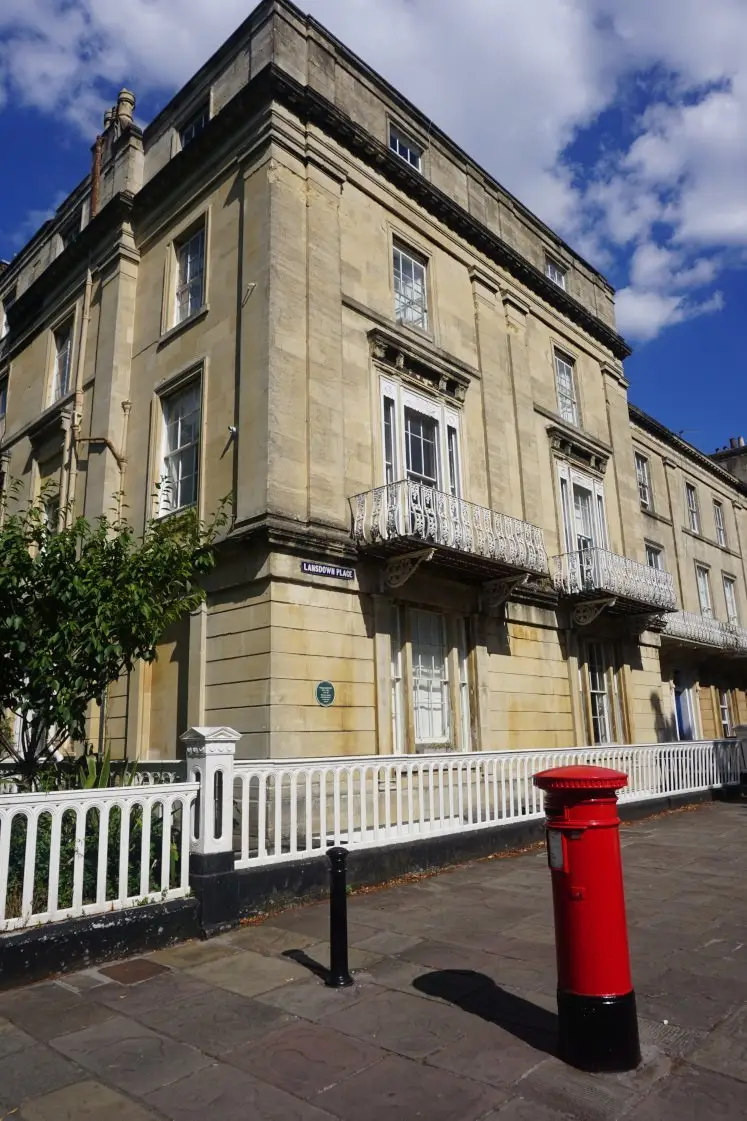
During the Second World War, most of the city centre was, unfortunately, bombed, resulting in a bland city centre being rebuilt. However, the city of Bristol has many vibrant and eclectic neighbourhoods waiting to be explored. From the stunning Old City to the hip Gloucester Road, the majestic Clifton Village and the charming Harbourside, Bristol features striking Georgian architecture, delightful independent shops, eye-catching colourful houses, remarkable street art and interesting cultural museums.
When and how long to visit Bristol
While you can visit Bristol all year round, summer is the best time to visit. With festivals and events happening most weekends and city goers relaxing in the parks and along the harbour, summer is the liveliest season in Bristol. The key festivals I would recommend are the street art festival Upfest in May, St Paul’s Carnival and Harbour Festival in July, and the Balloon Fiesta in August. Most festivals occur every year, but not all do.
The autumn and winter months are a little colder and a little wetter, but Bristol can be discovered in any weather. The colder months are a perfect excuse to explore the various shops, cafés and museums lining the city streets. During the festive season, Bristol enjoys Christmas markets, festive events and enchanting lights throughout the city.

Bristol can be visited in a 2-day weekend for a quick whistle stop tour of the city’s key attractions. However, if you wish to explore the soul of the city, you should stay for 3 to 5 days. If you also want to discover the South West region by taking unforgettable day trips and road trips to the English countryside, then I would recommend visiting for a week or more.
Top 7 places to visit in Bristol
Bristol is made up of different neighbourhoods, each with their own uniqueness. To explore Bristol to the fullest, I’ve compiled a list of the key attractions and places to visit in some of these neighbourhoods. If you’re staying for a short while, you’ll only have time to fully explore 3 or 4 places. During your visit, I’d recommend staying in any of these neighbourhoods, whichever takes your fancy.
1. The quaint Old City
The Old City is located in the city centre and, as its name indicates, is one of the oldest parts of Bristol. There are many sights to visit in the Old City, all different and all striking in their own right, yet forming a charming whole. The best way to enjoy the Old City, like most of Bristol, is to walk along its cobbled streets and get lost in its stunning architecture.
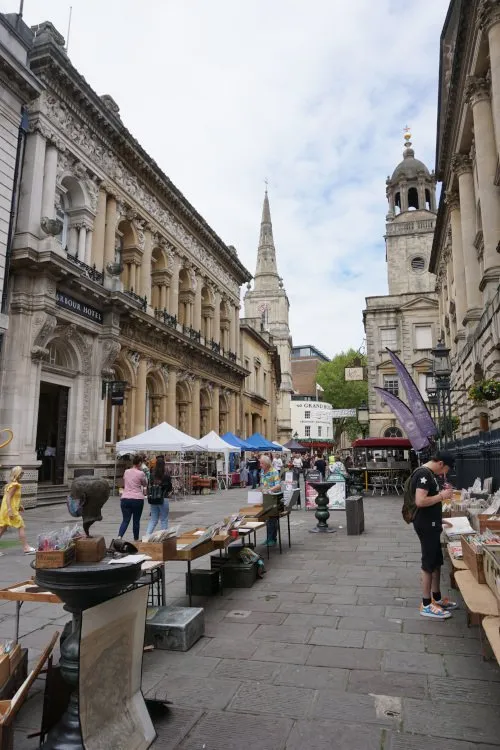
Broad Street and Corn Street are enchanting narrow streets with a diverse range of architecture. St Nicholas Market boasts a delightful collection of open-air market stalls. Queen Square is a grand Georgian park complete with stunning Georgian town houses and imposing statues.
King Street offers a collection of the oldest and quaintest pubs in the city. You’ll find King Street burgeoning with people any evening of the week. Along King Street, the Old Vic theatre is not only the oldest theatre in Bristol, but the oldest continuously operating theatre in the UK. Near the Old City, the church of St Mary Redcliffe is worth a detour. Built in the 12th century, the Gothic church boasts an arresting structure and striking stonework.
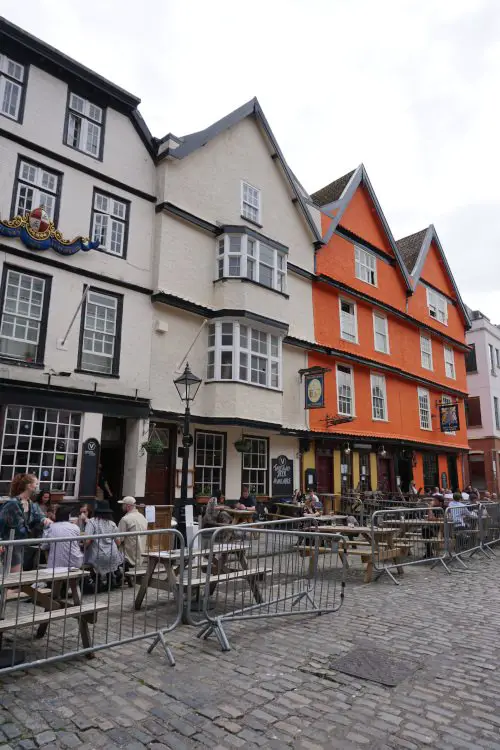
Not far from the Old City and Park Street, the Christmas Steps is one of the most enchanting lanes in Bristol. As its name indicates, the Christmas Steps is a narrow medieval lane made of flights of steps and featuring lovely shops, delightful art galleries and quaint pubs. The lane is one of the rare medieval streets left in Bristol.
2. Hip Stokes Croft & Gloucester Road
The city of Bristol is well-known for its street art, especially Banksy’s famous graffiti. Stokes Croft is perhaps Bristol’s most vibrant neighbourhood and is filled with colourful murals. Located north of the city centre, Stokes Croft is a lively and cultural place.
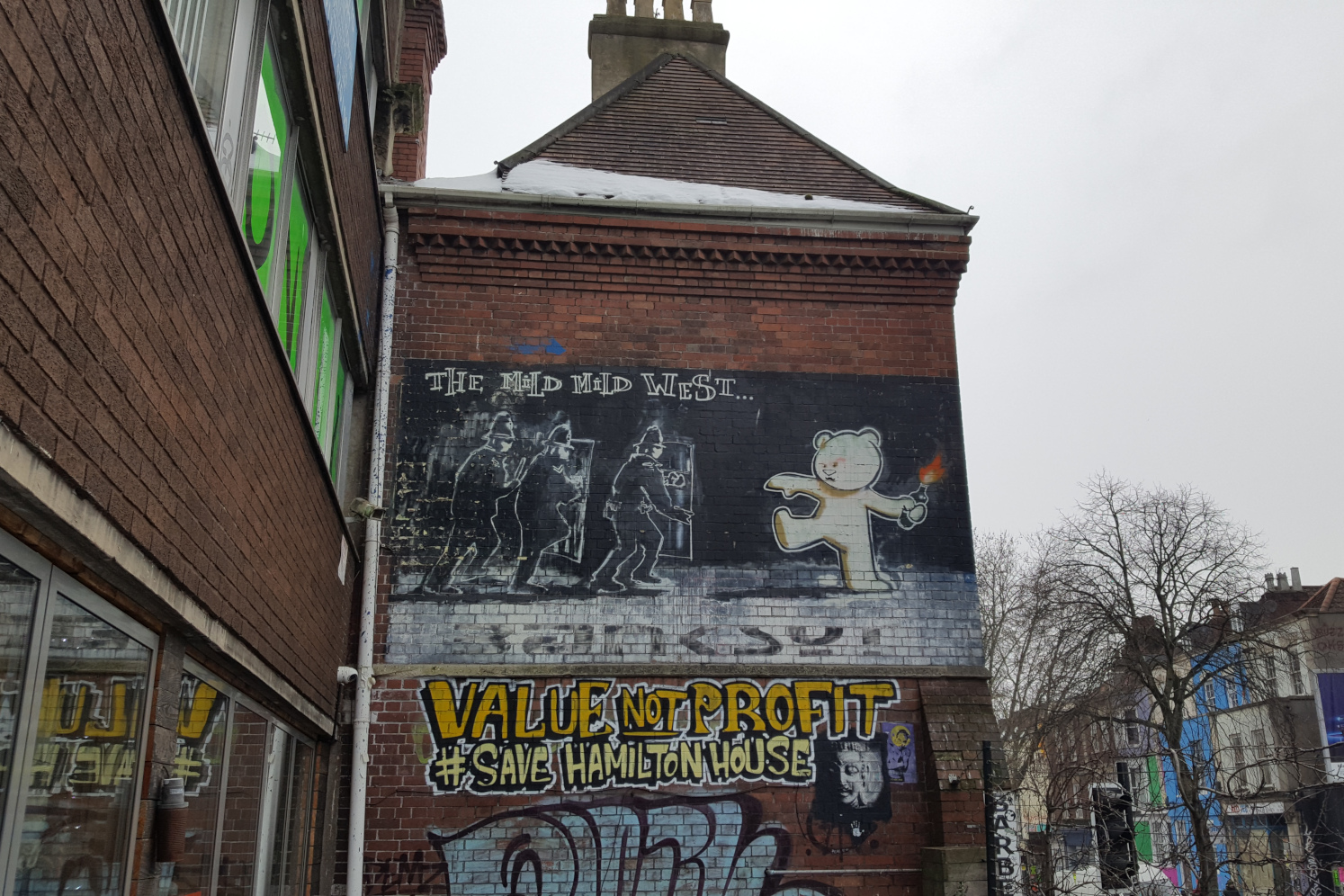
Stokes Croft has a high concentration of Banksy graffiti from the renowned Mild Mild West on Stokes Croft road to the Rose on a Mousetrap on Thomas Street North and Take the Money and Run, one of Banksy’s oldest art pieces, now unfortunately covered up. If you wish to spot more of Banksy’s art in Bristol, check out the Banksy’s Bristol guide.
Stokes Croft also boasts charming shops, delightful cafés and bars, and lovely artist studios. As you continue heading north, Stokes Croft road leads onto Gloucester Road. This street stretches for miles and also features lovely independent shops, cafés and pubs, as well as a vibrant nightlife.
3. Sociable College Green & Park Street
To the west of the city centre, the verdant park of College Green is the gateway to the west end of the city. College Green is bordered by the arresting Bristol Cathedral and noteworthy City Hall. Bristol Cathedral is a medieval church which boasts spectacular vaulted ceilings, while City Hall is a remarkable crescent-shaped building.
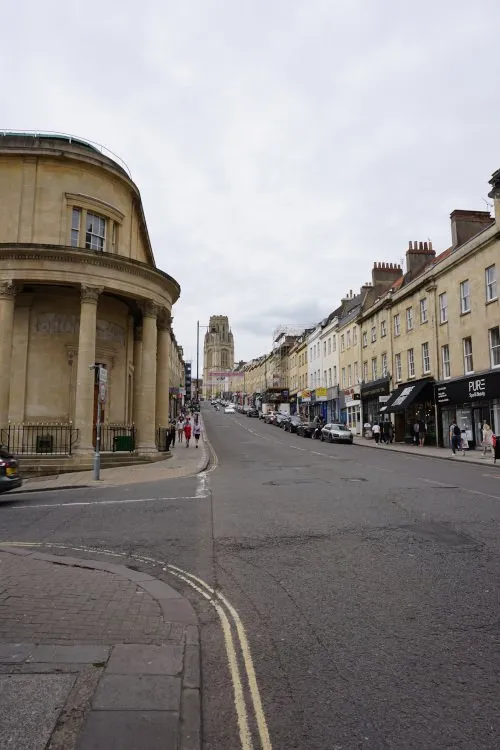
Leading off College Green, Park Street is one of Bristol’s most famous roads, and one of the steepest. Featuring a variety of fashion shops, vintage boutiques, delicious cafés and trendy bars, Park Street is both a retail street and social hub. Along with the Triangle at the top of Park Street, this road is especially popular with students and young adults in the evenings.
Overlooking Park Street is the Bristol Museum & Art Gallery, one of Bristol’s free museums. With its high tower, grand entrance hall and intricate facade, the Bristol Museum is a work of art in itself. The museum also boasts extensive collections of art and natural history, and regularly hosts temporary exhibits.
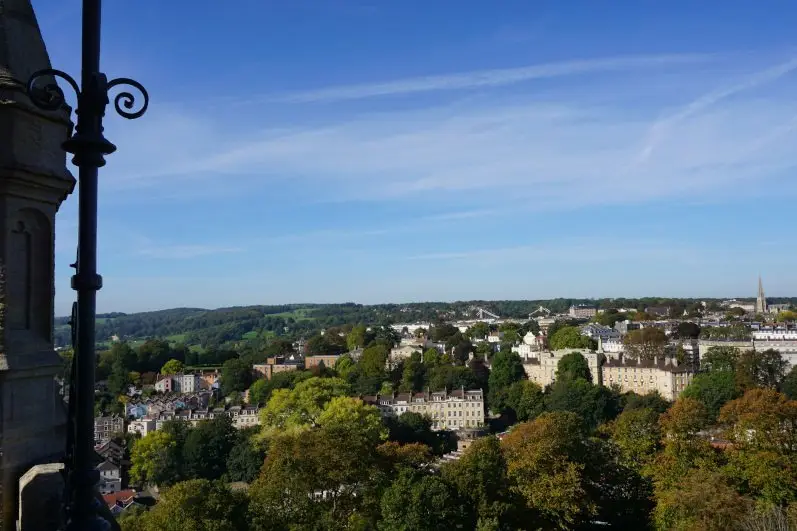
Near Park Street, Brandon Hill is a delightful park which enjoys commanding views of Bristol and the surrounding hills. At the top of the steep hill stands Cabot Tower, a 19th century tower which features a narrow spiralling staircase and stunning 360° views of the city, extending from the city centre to the Harbourside and Clifton Village.
4. Grand Clifton Village
Clifton Village is Bristol’s Georgian neighbourhood located to the north west of the city. Filled with splendid 18th century terraced houses, Clifton Village is a quiet, peaceful neighbourhood and a marvel to discover. From Caledonia Place to West Mall streets, Royal York Crescent and Victoria Square, Clifton Village boasts spectacular Georgian architecture.
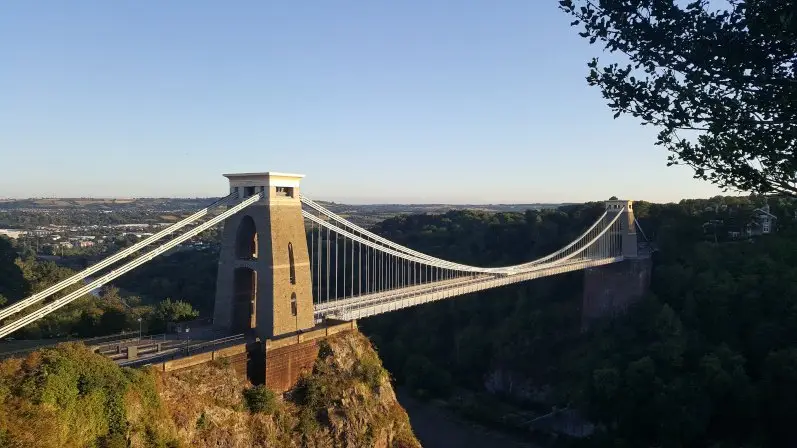
The key landmark of Clifton Village (and Bristol) is the Clifton Suspension Bridge. Crossing the Avon Gorge, the grandiose bridge was designed in the 19th century for horse traffic by Isambard Kingdom Brunel, and still withstands modern travel. The Clifton Suspension Bridge offers splendid views of the city of Bristol. You can walk across the bridge for free, or drive over for a fee.
You can admire the best views of the Clifton Suspension Bridge from Observatory Hill. Set on the cliff side, the small park also enjoys lovely views of the Avon Gorge and Bristol. Stretching from Observatory Hill to Stoke Bishop, the Clifton Down Park runs along the Avon Gorge. One of Bristol’s top parks, the Downs is the perfect spot for strolling, playing sports, walking your dog and picnicking. Find out more with the top Bristol walks guide.
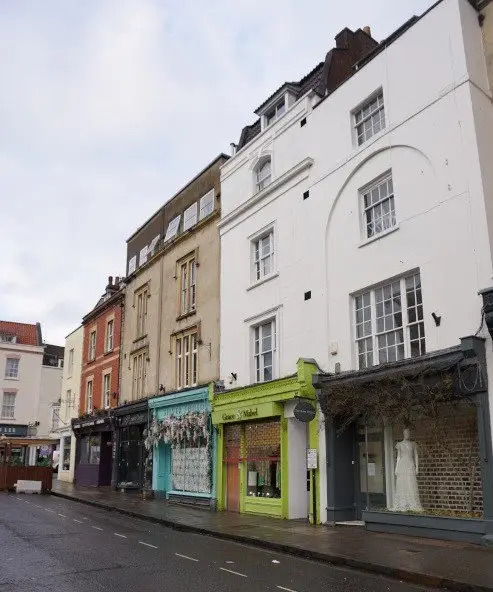
In the heart of Clifton Village, Princess Victoria Street and The Mall feature delightful shops, lovely cafés and delicious restaurants, and form the hub of the village. On Boyce’s Avenue, Clifton Arcade is a shopping and leisure centre boasting quaint boutiques, art galleries and coffee shops worth a visit. Find out more with the Clifton Village guide.
5. Serene Harbourside
Located to the south of the city centre, Bristol’s charming harbour features a tranquil waterfront, a delightful riverside path and lovely views of the Hotwells neighbourhood and its colourful houses. Stretching from the old city to Hotwells on one side of the river, and to the tip of Spike Island on the other, Harbourside is best enjoyed on foot.
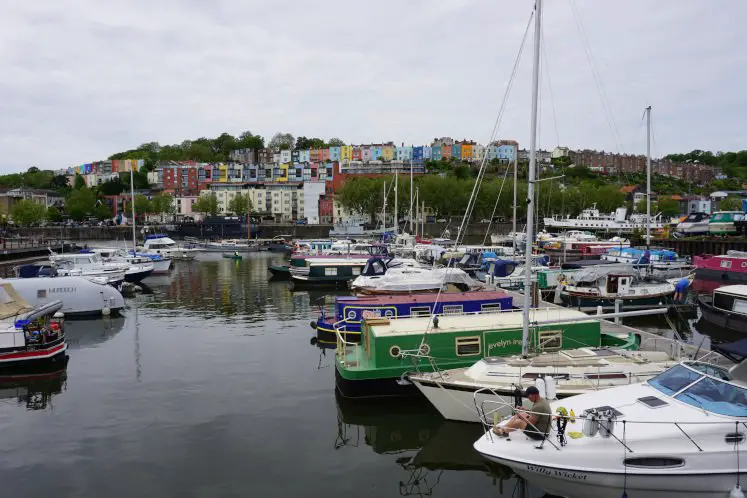
Walking along the waterfront on Spike Island, you can discover many top Bristol attractions. The M Shed museum recounts Bristol’s history from prehistory to today with thrilling exhibits. Wapping Wharf offers the perfect spot for a well-deserved break in its trendy bars and restaurants. The delightful Bristol Marina charms with its assortment of colourful moored boats.
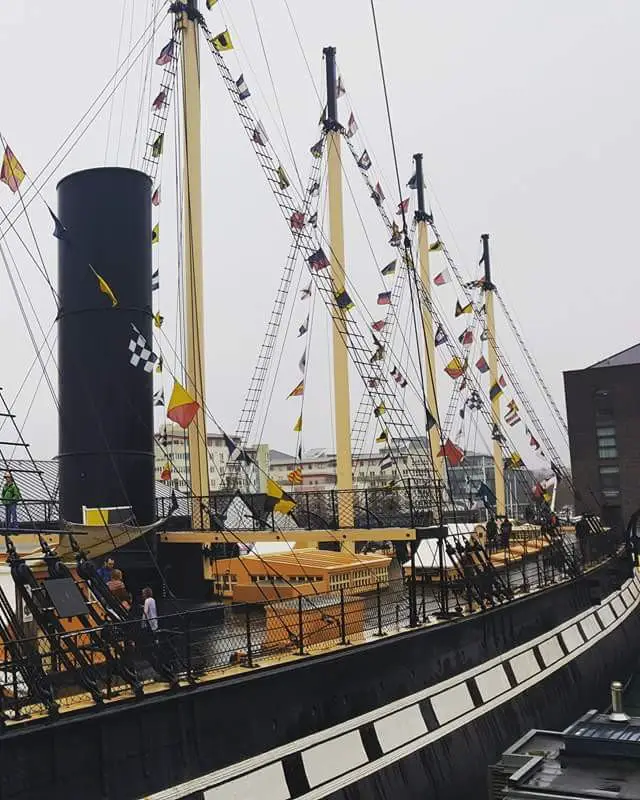
Sitting in the harbour, the SS Great Britain is one of Bristol’s key attractions. Narrating the vessel’s story from the docks of Bristol to its tours around the world, its neglect in the Falkland Islands and finally its return to Bristol, this 19th century ship offers a sensory experience and transports you back to seafaring times. Check out the SS Great Britain’s guide.
6. Trendy Bedminster
Featuring a plethora of independent shops, bars, cafés and markets, Bedminster’s main streets, North Street and West Street, are leisure and entertainment hubs. Located to the south, Bedminster is separated from the rest of the city by the River Avon.
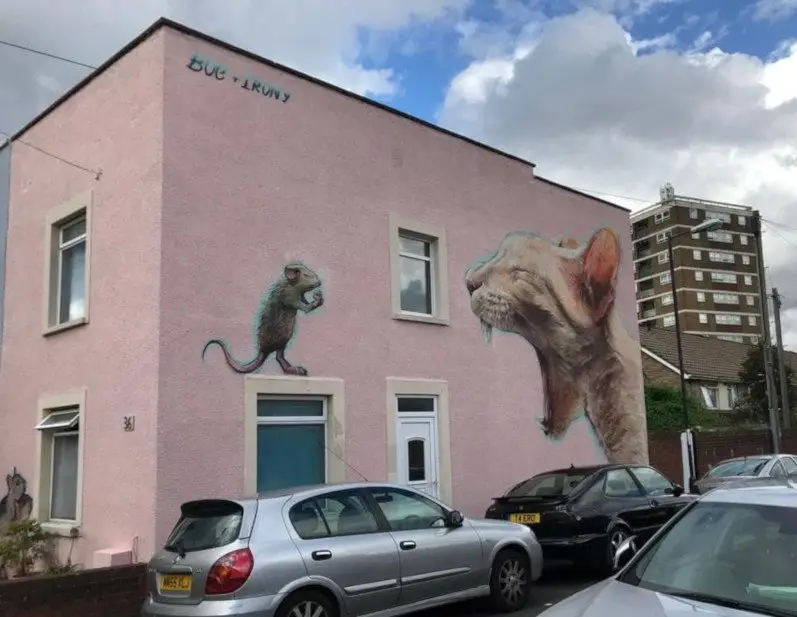
Bedminster is also known for the many vibrant and colourful graffiti along its streets. Hosting the street art festival Upfest every year (or almost), the walls of this trendy neighbourhood are painted anew every time. If you can’t make it to the festival, don’t worry, you can admire the graffiti all year round.
7. Quaint Arnos Vale Cemetery
Arnos Vale is the most famous cemetery in Bristol, and features grand avenues, impressive monuments and fascinating tombs. This peaceful and quaint cemetery is a 19th century Victorian garden cemetery which stopped operating in the 1980s. The architecture and landscape of the garden reflects classic Greece, as was popular in Victorian times.
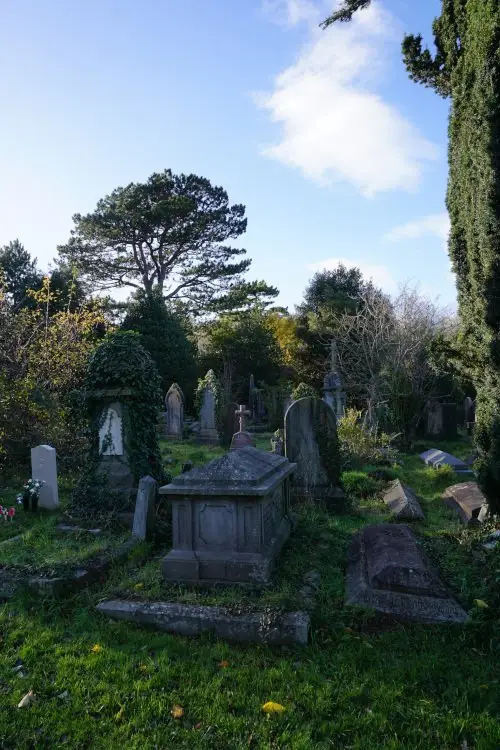
The best way to explore Arnos Vale Cemetery is to simply stroll along the avenues, explore the small lanes and discover the most interesting stones. The cemetery also includes war graves. A map is available at the East Lodge, and tours and events are regularly organised. For more information, visit arnosvale.org.uk.
Top Bristol day trips
Bristol is the capital of the South West and the ideal place to explore the region further. From the striking city of Bath to the picturesque rolling hills of the Cotswolds, the breathtaking scenery of the Mendip Hills and the enchanting vale of the Wye Valley, day trips from Bristol offer an escape for everyone. Find out more with the Bristol day trips guide.
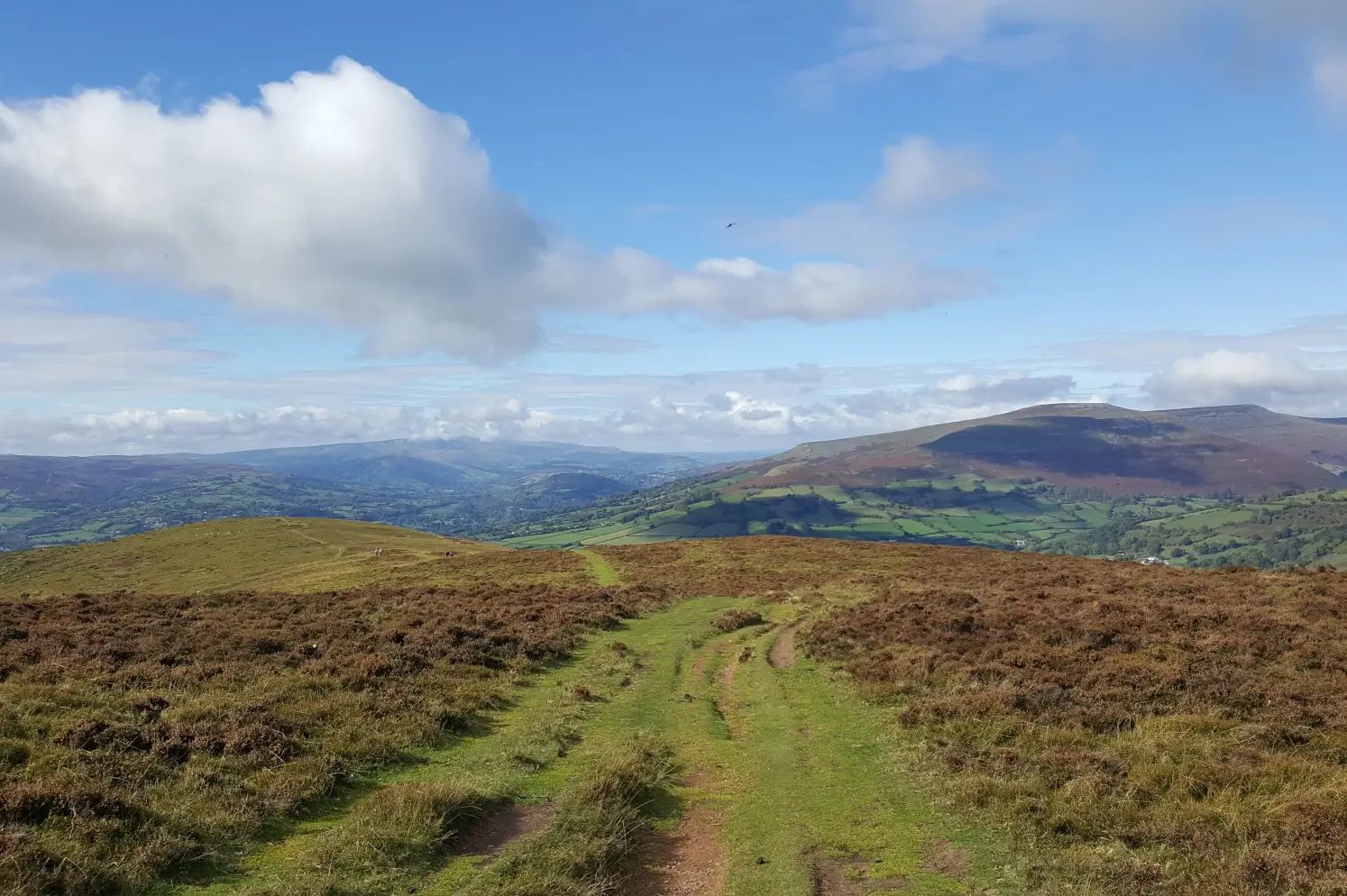
How to get to Bristol
By train
Arriving by train is usually the easiest way to get to Bristol from any other UK city. Temple Meads is Bristol’s main train station, located a 15-minute walk away from the city centre. Parkway is located further out to the north of the city. There are direct trains to Bristol from most major UK cities, including London, Cardiff, Birmingham, Manchester and Edinburgh, as well as from key cities in the South West, including Bath, Swansea, Exeter and Penzance.
By bus
Bus services to Bristol are generally cheaper than trains. However, direct buses will only be available from cities nearer Bristol, such as London, Cardiff, Birmingham, Manchester and Bournemouth. Bus journeys also tend to take longer than the train, and the British roads are notorious for roadworks and traffic which slow down the journey. The Bristol Bus & Coach Station is located in the city centre.
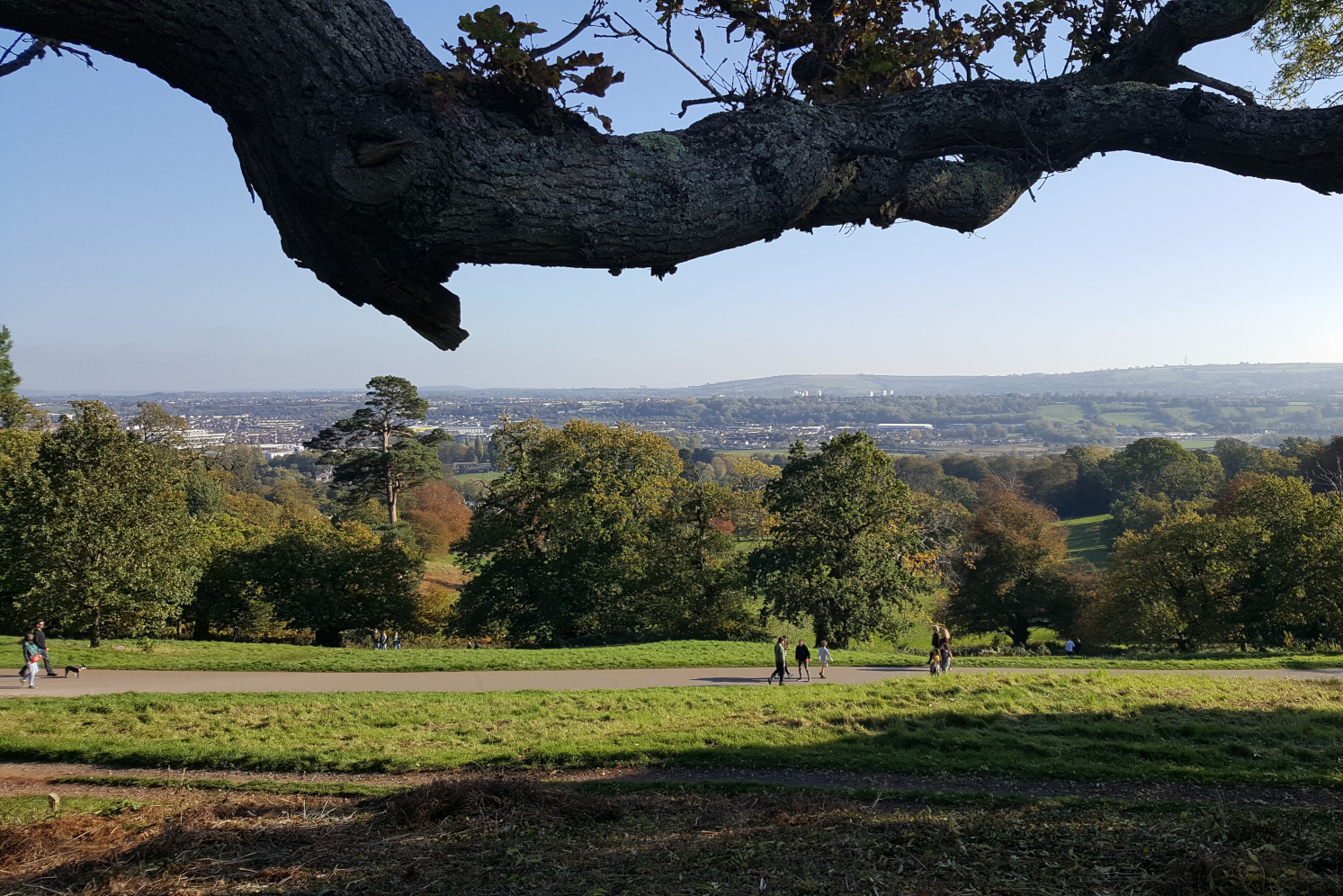
By car
Travelling by car to Bristol is probably the option involving the most hassle, unless you’re arriving from a remote location with little public transport. You cannot rely on British roads for a speedy arrival, and Bristol does tend to get congested, especially during rush hour.
You can park in Bristol’s city centre in off-street car parks as well as on the streets. However, there is usually a time limit for on-street parking. In the quieter neighbourhoods of Bristol (such as Redland, Cotham and Bedminster), you can park on the streets for free in the evenings and on weekends. Park and ride car parks are also available in Portway, Long Ashton, Brislington and Lyde Green. These car parks are generally cheaper than parking in the city centre. For more information on car parks in Bristol, please visit bristol.gov.uk.
By plane
Bristol airport is well served by other major UK and European cities. The main airlines flying to Bristol include British Airways, EasyJet, KLM, Ryanair, Aer Lingus and Lufthansa. The airport is located just 20 minutes outside the city. From there, you can easily get into the city by bus or taxi.
For international or cheaper flights, London airports are your best bet. Prefer Gatwick and Heathrow as you can get to Bristol more easily by train or bus. Cardiff and Birmingham are the other two airports closest to Bristol.
Share this guide:
Pin this for later:
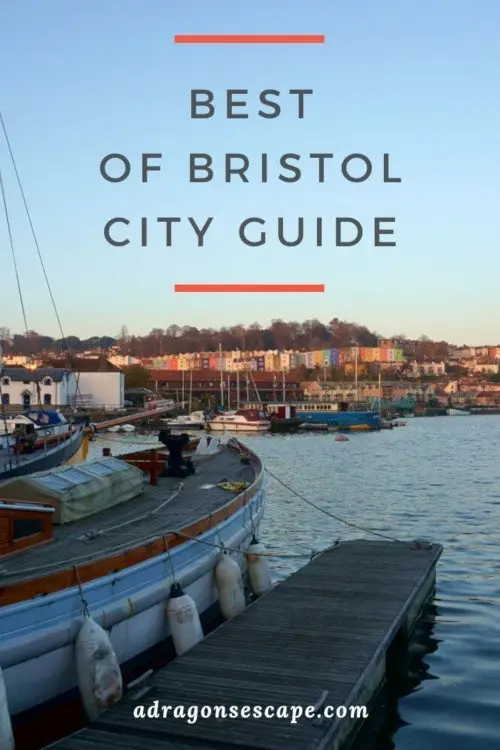

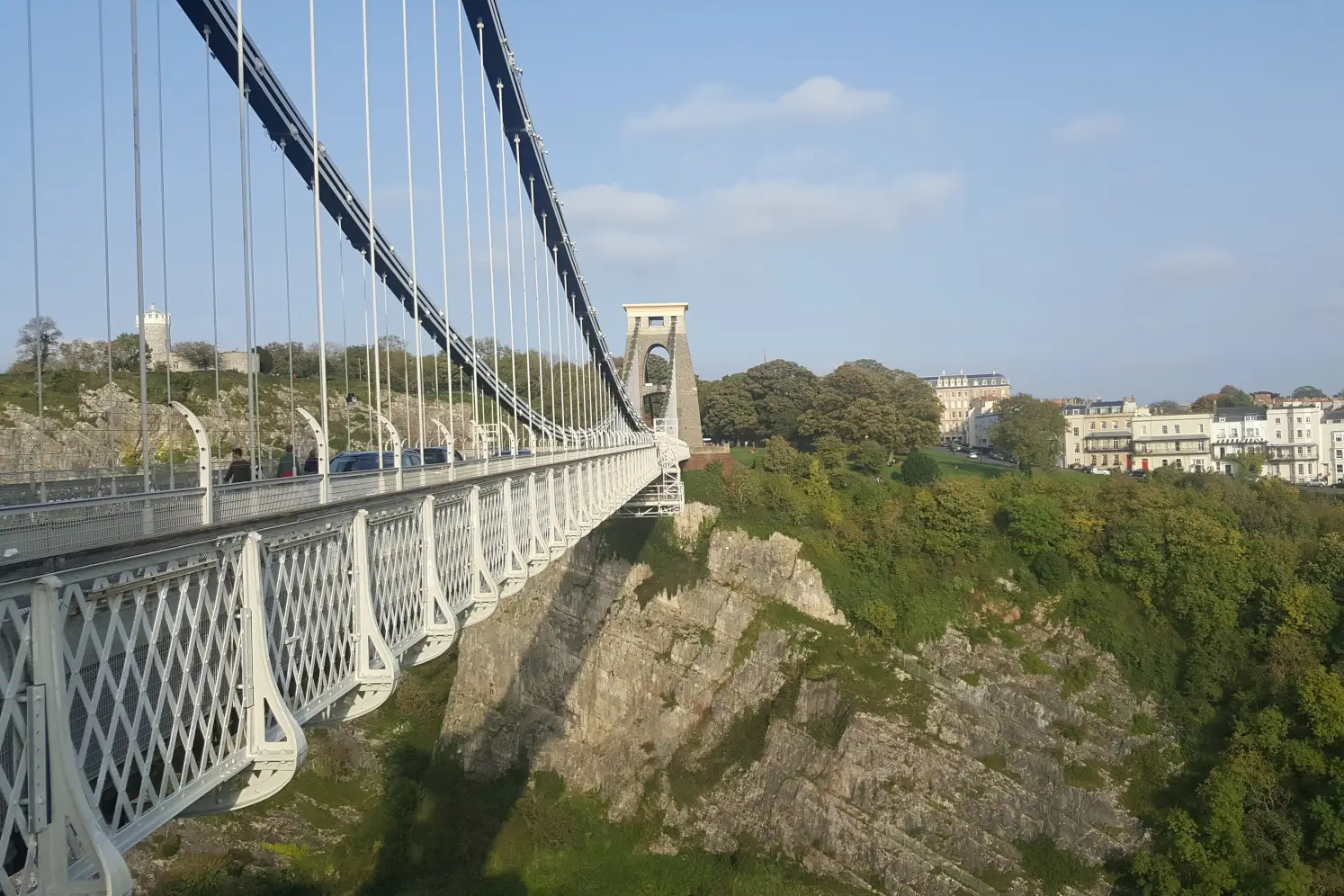
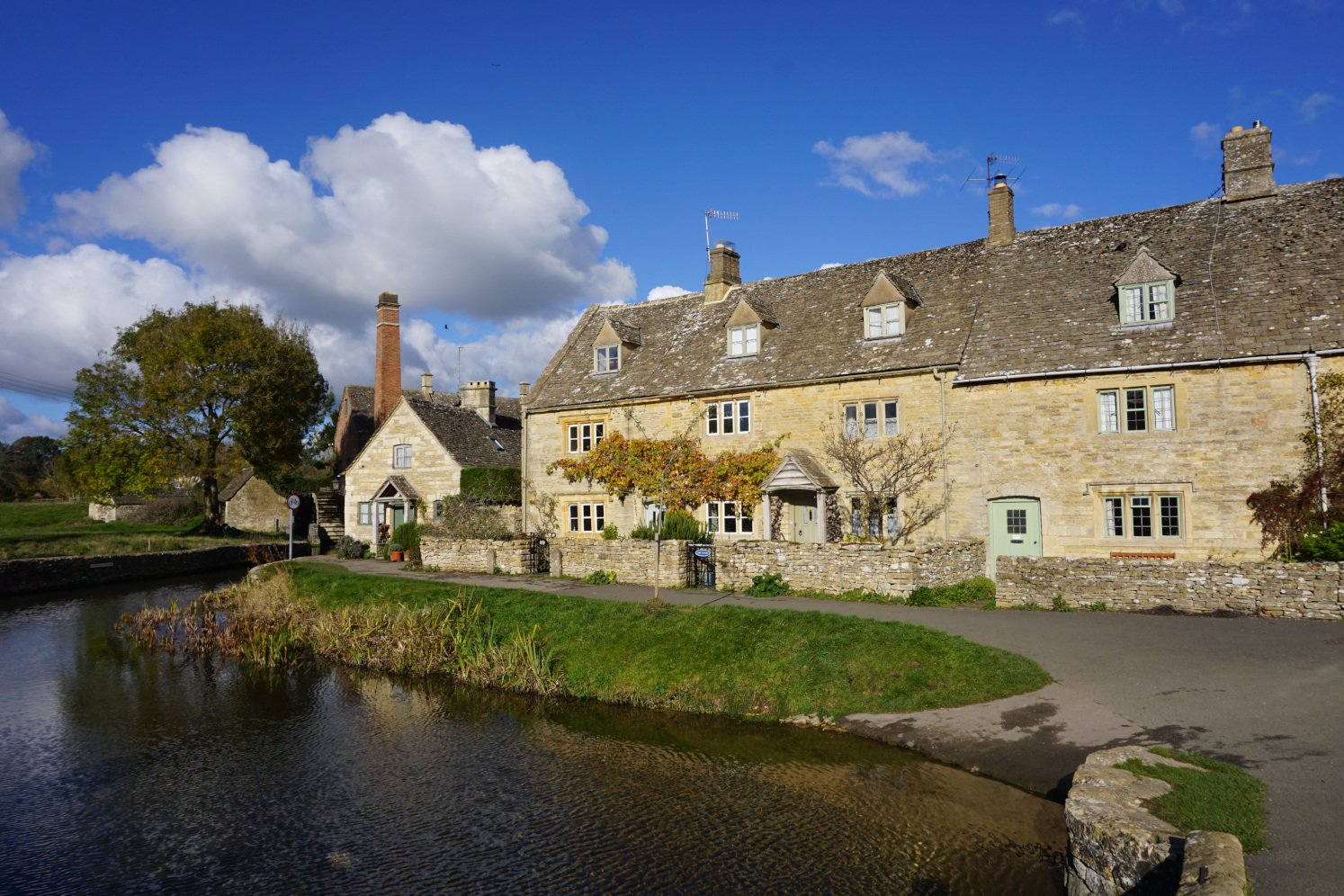
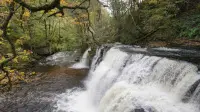
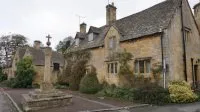
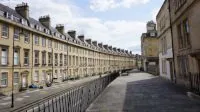
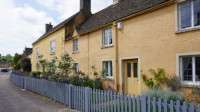
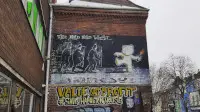
Hello – I have spotted a typo. The Bristol Old Vic is the oldest working theatre in the UK, not just Bristol.
Hi Jan, thank you very much for your input, I have updated the article. I hope you enjoy exploring Bristol!